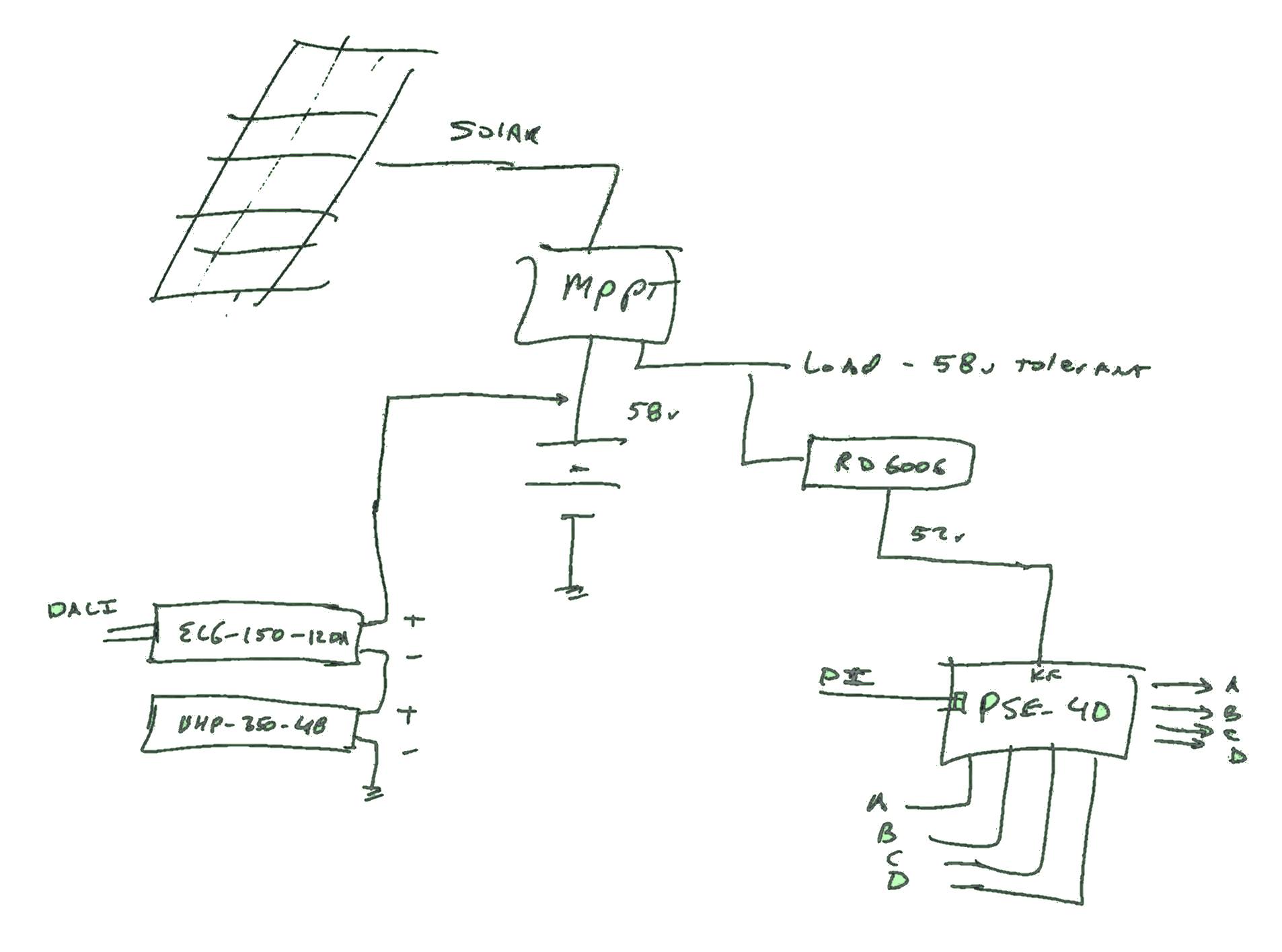Off grid and Hybrid systems

Our method is to combine Battery, Solar and DC loads, to simplify and reduce the costs of smaller scale solar projects.
ATX LED DC lighting has been installed in 85+ houses with 48 volt lighting, and so far 2, use the proposed method.
The background - Grid energy suppliers are concerned about inverters that feed energy back to the grid in conventional grid-tied solar systems.
If we do have have inverters, and do not feed back to the grid - then the regulations are simplified. In Austin for example, a 2nd power meter, billing account, permitting and costs for backfeed protection and extra 200 Amp master cutoffs, burden the project. The billing arrangement is complicated and you get about 1/2 of the value of the energy you produce.
Therefore, a system that lights, cools, exhausts and charges a dwelling, with DC current, without any inverter, has no impact on the Utility grid directly - indeed, the method proposed is less variable than a grid tied solar system.
The proposal Load Type
| Conventional Energy for high loads
| Offload the lower energy elements
|
Hot Water
| Gas
|
|
Cooking range
| Gas
|
|
Induction Cooktop
|
| DC - Solar single pot 500 / 1800 Watt Induction cooktop
|
Normal loads ( Dishwasher, Disposal etc)
| 120 VAC
|
|
Dryer
| Gas
|
|
Electric car charging
| 240 VAC
|
|
Lighting
|
| ATX LED Solution for LEDs
|
Cell phone / laptop chargers
|
| ATX LED Solution for USB and USBC
|
Exhaust fans
|
| ATX LED Solution for exhaust fans
|
Ceiling Fans
|
| DC Solution with Carro
|
HVAC under 16,000 BTU
|
| DC Solution with HotSpot HVAC
|
Heating
| Gas
|
|
Fridge
| 120vac conventional
| DIY 48v compressor
|
The DC is generated by Solar, and stored in a battery sized for the project. The Battery is a recycled EV battery like the Nissan Leaf battery pack ( 3.5 kWh). The battery is kept at full charge by an algorithm, which will consume grid power from time to time.
The house has an AC to DC converter that runs the house when the Solar + Battery state is unable to. Excess solar capacity over the battery charge rate, and when the battery is full, is shunted into the house, reducing the load. A algorithm decides the optimal shunting of energy to target the lowest use of Grid energy without demand fluctuations, and smoothly ramps the grid demand down as the daylight produces the energy to fully charge the Batteries and fulfill demand, and up again as the Battery is depleted in darkness.
At no time does any of the battery or solar energy get converted to infrastructure 120v/240vac. This eliminates 25% of the conversion loss, and provides the safety for linemen and firemen, and eliminates the 2nd Utility meter and cutoff. The result is no more or less chemically safe than a Leaf parked in the garage. Electrically - the recycled Leaf ( or GM or Tesla) battery is 380 volts - our project uses fewer cells, and is 58 volts so we are electrically safer. It removes peaks from the grid. The ROI is judged on reducing the incremental utility rates Here in Austin, the utility charges me at 23 cents/kWh peak rate for the energy the house uses, and pays me 9.7 cents for the solar energy it feeds in - so even when the house is net zero, there is a 13.3 cent per kWh fee.
The parts
ATX LED provides a DC system that works from any 52v source
- Lighting with dimmers ( tested per California Title 24 and JA8)
- exhaust fans with timers and speed controls ( from Delta )
- transfer fans with timers and speed controls ( from Delta )
- chargers for laptops and phones
- system management
- home automation with Siri/Alexa/Google and so on.
- optional human centric tunable white light
Tech Direct details
a) Does the BMS shut off the current after 58.8v is reached - to protect the cells? Yes
b) If we then drain the battery - what is the minimum safe voltage ? 42v
c) Does your BMS shut off the load if the voltage drops below some value? What is that value? yes 41v
d) Can we supply 6 amps from 48v to 58.8v without any profile??? yes